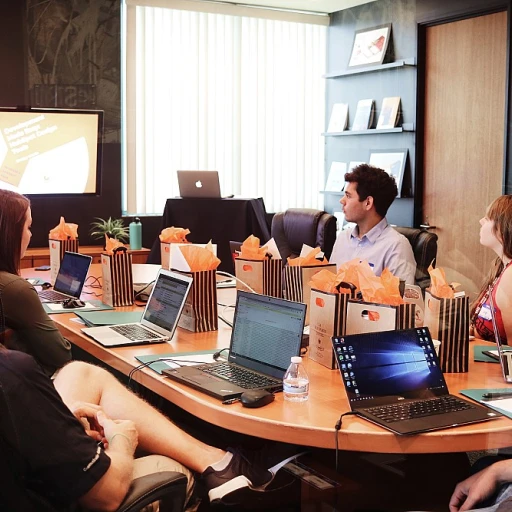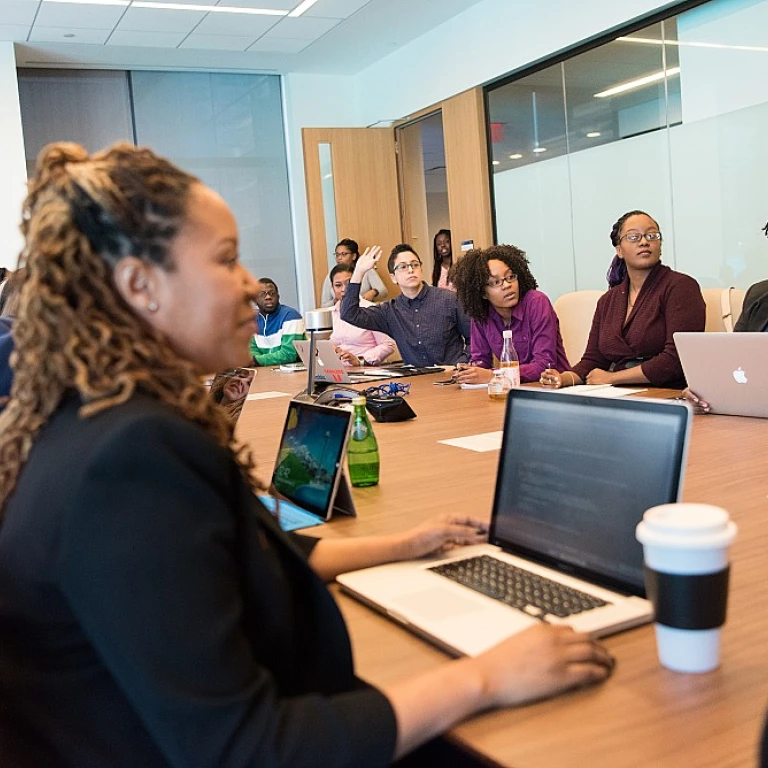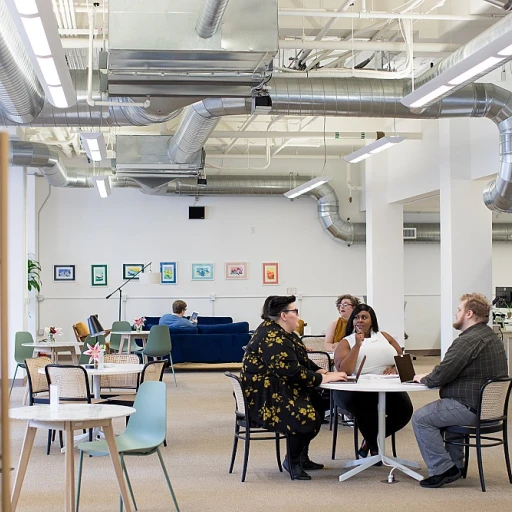
Understanding the Concept of Lear Talent
In recent years, the concept of "Lear Talent" has gained significant traction as individuals and organizations recognize the importance of continuous learning and adaptation. This term highlights the potential within employees to evolve and contribute more significantly to their workplaces. Essentially, Lear Talent refers to the ability to quickly acquire and apply new skills in response to emerging industry needs or personal career aspirations.
Embracing a Culture of Continuous Learning
To fully understand the essence of Lear Talent, it's essential to embrace a culture that prioritizes ongoing education and skill expansion. Companies, especially in dynamic markets like the United States and the United Kingdom, are increasingly focusing on helping their workforce develop a skill set that remains aligned with current market demands. The goal is not only to fill immediate skills gaps but also nurture a workforce that can forecast and adapt to future trends.
The expansion of one's skill set is not merely advantageous for finding a place to work in a specific role; it's a great reason to explore areas outside one's usual expertise. Professional reviews have consistently highlighted that employees who invest time and effort in broadening their skills often enjoy greater job satisfaction and career growth.
Time and Experience: Two Key Drivers in Reskilling
Time and experience are two critical components when it comes to reskilling. While experience provides a foundation built on what one already knows, time is the resource that allows for the unfettered exploration and mastery of new areas of knowledge. When organizations, such as Lear Corporation, prioritize time for learning within their privacy policy frameworks, employees are able to not only improve their standing but also contribute more effectively to company objectives.
For those seeking to join the ranks of highly skilled professionals, actively participating in reskilling initiatives is an imperative decision. The path towards becoming a "Lear Talent" is one that is inherently rewarding and strategically sound. To gain a deeper understanding of the types of skills valuable for reskilling, consider reviewing the difference between norm skills and meta skills in reskilling.
Identifying Skills Gaps
Recognizing the Skills Your Team Lacks
Identifying skills gaps is an essential step toward fostering lear talent within your organization. This process involves an assessment of the current abilities and competencies of your workforce versus what is needed to meet business objectives effectively. When you pinpoint these gaps, you create a roadmap for growth, understanding which areas require immediate attention and which can enhance over time. To start, review the full scope of roles and responsibilities at your company. Consider not only the top-level positions but examine every role within your team. A comprehensive review may include:- Assessing current job descriptions and contrasting them with desired outcomes.
- Evaluating the experiences and skill sets of your team members.
- Engaging employees to provide feedback on their view of their own skills and potential gaps.
Effective Reskilling Strategies
Implementing Successful Learning Paths
Designing and implementing effective reskilling strategies can unlock the hidden potential of your workforce, especially when working with something as dynamic as lear talent. To get started, it's essential to have a clear understanding of the skills required and the gaps present, which can be achieved by conducting a thorough skills gap analysis.
Once this foundation is laid, you can move forward with strategies that truly align with your organization's goals and the individual growth of each employee. Here are some top strategies to consider:
- Customized Training Programs: Tailor training to meet specific needs, ensuring employees can expand their skill set effectively without wasting time.
- Mentorship and Collaboration: Foster a culture where experienced staff can view and join new team members in experiential learning, creating a collective growth environment.
- Digital Learning Platforms: In today's digital age, online platforms allow for flexible learning schedules, making them a great option for continuous employee development.
- Regular Assessments and Feedback: Implement mechanisms for regular reviews to identify areas of improvement and verify the progress towards achieving the set skill goals.
It is also important to recognize the great reasons to adjust reskilling strategies regularly. With the evolving demands in the workplaces—from the city york to the united states or the united kingdom—resilience during a reskilling journey is key. Experience from verified cases shows that constant feedback and adjustments lead to a better learning outcome, bringing better lear into workplaces like lear corporation.
Do not overlook the pivotal role technology plays in strategizing these reskilling efforts. Implementing a competency management system can enhance the tracking, adjusting, and overall delivery of training, ensuring that it aligns with individual growth trajectories and organizational goals.
Overcoming Challenges in Reskilling
Embracing the Boundaries of Reskilling
Reskilling is a crucial journey, expanding one's potential and embracing the full breadth of talent development. However, this path is not without its bumps. One must navigate through various challenges to achieve success in their reskilling ventures.
Balancing Time and Commitment
Time management is a top concern when pursuing reskilling, especially for those juggling work, family, and personal interests. Dedicating time to learn new skills while managing existing responsibilities requires strategic planning. Start by reviewing your daily schedule to identify time slots where learning can seamlessly fit in. It’s a delicate balance, but a necessary commitment for expanding your skill set.
Managing Expectations and Experiences
When embarking on a reskilling journey, the experience can sometimes fall short of expectations. This can be due to misalignment between learner objectives and program offerings, leading to a bad experience. To mitigate this, potential learners are advised to read verified reviews of programs, ensuring they align with personal goals and preferences. Informed decisions are key to a great experience in reskilling, whether you’re in the United Kingdom or the United States.
Learning Through Cultural and Institutional Differences
For individuals transitioning careers across different regions, understanding cultural distinctions can be challenging. For instance, work environments in the City of York might contrast with those in Lear Corporation. Localized training programs that address regional differences can better facilitate the reskilling process for learners, making it a nice place to work and grow.
Facing Technological Challenges
Technology can be both a great ally and a hindrance in reskilling. Technical barriers, such as access to online platforms, impact learners' ability to participate fully in digital courses. Ensuring that resources are accessible across various devices and locations is a step towards inclusivity. Employers can play a role by providing the necessary tools and technologies to help their teams overcome such challenges.
The Role of Employers in Supporting Reskilling
The Crucial Support from Employers in Reskilling
In the journey of enhancing lear talent, employers play an indispensable role. Reskilling efforts can be daunting, but with the right support from organizations, it can result in a great time for both employees and the business itself. By providing ample opportunities for development, companies can help bridge skills gaps effectively, leading to a more competent workforce.
Firstly, employers can encourage employees to click expand their horizons by offering access to a variety of learning platforms and resources. This not only aids in upskilling but also prepares employees for future challenges. Resources should be reviewed regularly to ensure they remain top-notch and relevant to industry trends.
- Employees should be given the time to join reskilling programs, integrating these into their work schedules without affecting productivity negatively.
- Institutions can provide personalized learning paths that start from the individual’s current skillset, optimizing results and efficiency.
- Feedback and reviews generated from these programs should be closely monitored to make better decisions on future course offerings.
Moreover, fostering a culture that encourages continuous learning is equally essential. Companies located in environments like the city York or united kingdom can view efforts across different regions to identify best practices in reskilling strategies.
Additionally, offering incentives for successfully completed programs can act as a strong motivator. Incentives are not only about financial rewards but also consist of career progression opportunities and nice recognition models. The objective is to transform a potential bad experience into a highly rewarding one, ensuring that people who undertake these training initiatives are highly recommended for promotions and new challenges.
Finally, respecting employee’s privacy through clearly articulated privacy policy and ensuring that their learning data is securely managed is another area where employers can build trust. These measures elevate the process from merely transactional to transformational, providing employees with a fully supported journey towards upskilling.
Measuring the Impact of Reskilling
Evaluating the Success of Your Reskilling Program
Measuring the impact of reskilling initiatives is crucial. It ensures that the time and resources invested are yielding the desired outcomes. Here’s how organizations and individuals can assess the effectiveness of their reskilling efforts:- Identify Key Performance Indicators (KPIs): Determining the relevant KPIs will help keep track of progress in gaining learner talent. These may include increased productivity, enhanced job satisfaction, or reduced turnover rates. Ensuring these indicators align with the company's business goals will provide a clear view of the success rate.
- Gather Feedback Through Surveys and Reviews: Collecting regular feedback from participants helps fine-tune the reskilling process. Reviews can reveal strengths and areas for improvement. Employers and program coordinators should encourage learners to provide honest feedback to capture their full experience.
- Performance Assessments: Conducting assessments post-training is another effective way to gauge improvement. It can highlight whether learners successfully expanded their skill sets, and are able to apply these in their daily tasks to reach great performance levels.
- Monitoring Career Progression: Tracking career advancement and decision-making post-reskilling can offer insights into long-term success. Increments in salary or promotions often correlate with the newly acquired skills, validating the program's benefits.
- Compare Against Benchmarks: Use industry standards and benchmarks to compare the program's success. This can include looking at other successful examples in similar places of work, like Lear Corporation or in locations such as City York.
- Conduct Longitudinal Studies: Long-term evaluations provide a comprehensive view of the program’s effectiveness over time. Understanding its impact on decisions and life changes helps further refine reskilling strategies.












